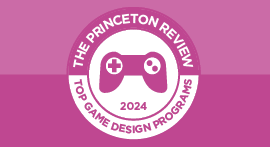Web Design
Overview
It’s not unusual to find a fifth-grade kid who can design his own website these days. The Internet has transformed so many things about our world: how we conduct business, how we communicate, even how we shop. And what would the Internet be without its Web pages? Not the fifth-grade kind, but the award-winning pages and sites that rethink the medium and exploit its features to the fullest extent. If you have an eye for design and a knack for computers, you might be a prime candidate for a major in Web design. You’ll compound the interest and knowledge you already have by starting from the beginning—designing and building a Web page—and working your way up to incorporating the latest ideas, technology, and features into the sites you create. Your course work will go over everything from identifying an intended audience to selecting graphics that best portray your message. You’ll learn about different Web browsers and plug-ins and their varying capabilities. And since the Web has an artistic element too, you’ll explore aesthetic design, color relationships, and the application of font styles. You’ll learn how to create animated elements for your sites, and how to incorporate a range of motions.
Websites are often interactive, and you’ll learn how to engage and guide the visitors to your site so that they get the best information possible. You’ll learn how to build chat rooms and discussion boards, and why you might choose to include them in your site’s design. You’ll learn all about links—when to use them, where they should lead your audience, and how to determine what other sites will best supplement yours.
Although much of Web design lies in learning the basics of Internet technology, you’ll also learn how to deal with clients and see a project through from beginning to end. And you’ll be equipped to gather information for your site, choose an appropriate style, and test your site’s effectiveness. Though Internet jobs in general are very much on the wane, more and more companies and individuals are taking their products and businesses to the Web, and will need your expertise and creative vision to bring their own ideas to life.
- $55,784 Tuition
- 1370 Avg SAT
- 14,001 Enrolled
View All Web Design Schools
SAMPLE CURRICULUM
Animation Techniques
Technical Writing
Interface Design
Navigation
Fonts
Color Theory
Browser and Plug-in Basics
Designing Interactivity
Workflow & Proofing
Conflict Management
Production Scheduling
Interactive Sites
The Intended Audience
HIGH SCHOOl PREPARATION
It goes without saying that the more you know about computers and the Web, the more prepared you’ll be for your major in Web design. Take any computer courses your school offers, as well as courses in art, English, and other humanities. However, some of the best preparation is probably what you do at home, experimenting with your own computer and learning design and programming skills. A basic familiarity with Web design and some of the language and skills that go along with it will give you a great head start on your major.
GRADUATE PROGRAMS & CAREERS
Explore Colleges For You
Connect with our featured colleges to find schools that both match your interests and are looking for students like you.
Top Schools for Game Design
Ready to create the next great app? Launch your gaming career at one of these top 50 programs.
Best 390 Colleges
168,000 students rate everything from their professors to their campus social scene.
Get Started on Athletic Scholarships & Recruiting!
Join athletes who were discovered, recruited & often received scholarships after connecting with NCSA's 42,000 strong network of coaches.



